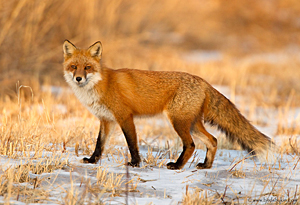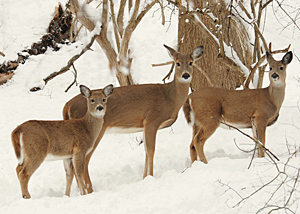
ADVERTISEMENT
- Rozovsky wins prestigious NSF Early Career Award
- UD students meet alumni, experience 'closing bell' at NYSE
- Newark Police seek assistance in identifying suspects in robbery
- Rivlin says bipartisan budget action, stronger budget rules key to reversing debt
- Stink bugs shouldn't pose problem until late summer
- Gao to honor Placido Domingo in Washington performance
- Adopt-A-Highway project keeps Lewes road clean
- WVUD's Radiothon fundraiser runs April 1-10
- W.D. Snodgrass Symposium to honor Pulitzer winner
- New guide helps cancer patients manage symptoms
- UD in the News, March 25, 2011
- For the Record, March 25, 2011
- Public opinion expert discusses world views of U.S. in Global Agenda series
- Congressional delegation, dean laud Center for Community Research and Service program
- Center for Political Communication sets symposium on politics, entertainment
- Students work to raise funds, awareness of domestic violence
- Equestrian team wins regional championship in Western riding
- Markell, Harker stress importance of agriculture to Delaware's economy
- Carol A. Ammon MBA Case Competition winners announced
- Prof presents blood-clotting studies at Gordon Research Conference
- Sexual Assault Awareness Month events, programs announced
- Stay connected with Sea Grant, CEOE e-newsletter
- A message to UD regarding the tragedy in Japan
- More News >>
- March 31-May 14: REP stages Neil Simon's 'The Good Doctor'
- April 2: Newark plans annual 'wine and dine'
- April 5: Expert perspective on U.S. health care
- April 5: Comedian Ace Guillen to visit Scrounge
- April 6, May 4: School of Nursing sponsors research lecture series
- April 6-May 4: Confucius Institute presents Chinese Film Series on Wednesdays
- April 6: IPCC's Pachauri to discuss sustainable development in DENIN Dialogue Series
- April 7: 'WVUDstock' radiothon concert announced
- April 8: English Language Institute presents 'Arts in Translation'
- April 9: Green and Healthy Living Expo planned at The Bob
- April 9: Center for Political Communication to host Onion editor
- April 10: Alumni Easter Egg-stravaganza planned
- April 11: CDS session to focus on visual assistive technologies
- April 12: T.J. Stiles to speak at UDLA annual dinner
- April 15, 16: Annual UD push lawnmower tune-up scheduled
- April 15, 16: Master Players series presents iMusic 4, China Magpie
- April 15, 16: Delaware Symphony, UD chorus to perform Mahler work
- April 18: Former NFL Coach Bill Cowher featured in UD Speaks
- April 21-24: Sesame Street Live brings Elmo and friends to The Bob
- April 30: Save the date for Ag Day 2011 at UD
- April 30: Symposium to consider 'Frontiers at the Chemistry-Biology Interface'
- April 30-May 1: Relay for Life set at Delaware Field House
- May 4: Delaware Membrane Protein Symposium announced
- May 5: Northwestern University's Leon Keer to deliver Kerr lecture
- May 7: Women's volleyball team to host second annual Spring Fling
- Through May 3: SPPA announces speakers for 10th annual lecture series
- Through May 4: Global Agenda sees U.S. through others' eyes; World Bank president to speak
- Through May 4: 'Research on Race, Ethnicity, Culture' topic of series
- Through May 9: Black American Studies announces lecture series
- Through May 11: 'Challenges in Jewish Culture' lecture series announced
- Through May 11: Area Studies research featured in speaker series
- Through June 5: 'Andy Warhol: Behind the Camera' on view in Old College Gallery
- Through July 15: 'Bodyscapes' on view at Mechanical Hall Gallery
- More What's Happening >>
- UD calendar >>
- Middle States evaluation team on campus April 5
- Phipps named HR Liaison of the Quarter
- Senior wins iPad for participating in assessment study
- April 19: Procurement Services schedules information sessions
- UD Bookstore announces spring break hours
- HealthyU Wellness Program encourages employees to 'Step into Spring'
- April 8-29: Faculty roundtable series considers student engagement
- GRE is changing; learn more at April 15 info session
- April 30: UD Evening with Blue Rocks set for employees
- Morris Library to be open 24/7 during final exams
- More Campus FYI >>
10:24 a.m., Feb. 9, 2011----Humans may whine about the harsh weather but for most of us winter isn't a matter of life or death. For many wild animals and birds, the stress of winter is life-threatening. Wild animals and birds must contend not only with extreme weather but with a lack of food and other resources, such as adequate shelter.
Winter adaptations vary by species. Some species migrate, some go into dormancy and some develop a thick skin and tough it out. The thick skin is literal -- from the bushy cold-weather undercoat of the fox to the thick winter coat of the raccoon.
Many birds adapt to winter by getting the heck out of here. About half of Delaware's common summer birds are migratory and depart for warmer climes each autumn, according to Chris Williams, a UD assistant professor of wildlife ecology in the College of Agriculture and Natural Resources.
The birds that do stick around Delaware often form flocks in the winter, comprised of members of the same species, or sometimes flocks of different species (known as mixed flocks). Common mixed flocks include small birds, like chickadees and titmice, which join larger birds, such as nuthatches and woodpeckers.
Flocking is a form of cooperative behavior that rarely occurs during spring and summer nesting season. Williams says that flocking can increase wintertime avian survival rates. Flocks have an easier time securing food since birds are foraging together. And when flocks roost together, heat loss is reduced. Flocking also can provide safety in numbers from predators.
Birds utilize a number of other survival strategies in winter, such as fluffing their plumage, which creates an insulating layer by trapping air. They cope with the cold by shivering, just like we do. And many species increase their metabolic rate to produce more body heat. The downside of this adaptation is that they need to eat more food, even though food supplies are limited.
A handful of species lower their metabolism, but only in the evening when food isn't available. These birds enter a state called torpor, which causes lowered body temperature and decreased oxygen consumption.
Plenty of mammals also slow their metabolic rate in winter. Groundhogs that live in northerly climes are “true hibernators,” meaning they exist in a state of uninterrupted, deep sleep for six to seven months, with body temperatures so low their metabolisms are almost at a standstill.
However, Delaware's groundhogs are “semi-hibernators,” says Derek Stoner, conservation coordinator at the Delaware Nature Society.
“In February and March, if it warms up to about 50 degrees, Delaware groundhogs will come out of their burrows,” says Stoner. “By St. Patrick's Day, the males, in particular are very active on warm days. They visit other burrows in hopes of finding a mate.”
In the fall, Delaware's groundhogs gained some 50 percent of their body weight to prepare for their long -- if somewhat fitful -- snooze. But they also stashed grass in their burrows for the occasional snack when they do awake. Chipmunks also are “semi-hibernators” at Delaware's latitude.
Deer don't hibernate in winter although they do move around less to conserve energy. In cold conditions, they gravitate to areas with good thermal cover, such as a patch of evergreen trees that's protected from the wind and cold and thus a degree or two warmer than surrounding terrain.
In the Poconos and Adirondacks you can see herds of several hundred deer hanging out together in the woods. Here in Delaware, herds are smaller, usually about 40 deer. Stoner says that a herd has congregated on Coverdale Farm, near Way Road, for the past several weeks.
Like flocking behavior in birds, herding is a wintertime phenomenon that increases survival rates. Come spring, the herd breaks up and the deer will go their separate ways.
Unlike us, wild animals and birds don't need to turn to the Weather Channel to know when a storm is brewing; they sense the shift in barometric pressure, says Stoner. While we make our pre-storm trip for milk, bread and eggs, they, too, make a mad dash for adequate provisions before the snow flies.
Article by Margo McDonough



